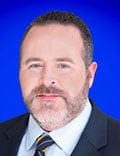For most medical school graduates, the transition from student to practicing physician brings both professional fulfillment and a sobering financial reality. According to the Education Data Initiative, medical school graduates, as of last August, carry an average educational debt of $234,597, not including undergraduate debt.
This burden can influence career decisions, practice locations, and personal milestones for years to come. However, multiple federal and state programs offer pathways to debt relief, from income-driven repayment plans to complete loan forgiveness. Understanding these options and their respective requirements is essential for new physicians seeking to optimize their financial strategy while advancing their careers.
Federal Loan Forgiveness Programs
Public Service Loan Forgiveness (PSLF)
The PSLF program represents one of the most significant debt relief opportunities available to physicians. Under PSLF, borrowers who work full-time for qualifying nonprofit or government employers can have their remaining federal direct loan balance forgiven tax-free after making 120 qualifying payments under an income-driven repayment plan.
Many hospitals, residency programs, and healthcare systems qualify as eligible employers under PSLF.

The program “is a major lifeline for doctors who work in nonprofit or government-affiliated roles,” said Steven Rogé, MBA, a certified financial planner and chief investment officer and CEO of R.W. Rogé & Company in Bohemia, New York.
For physicians who successfully navigate the program, the relief can be transformative. Chrissie Ott, MD, a board-certified internal medicine-pediatrics physician and personal-professional development coach in Portland, Oregon, experienced this firsthand. After taking a position with a qualifying nonprofit organization about 5 years post-residency, she made 120 on-time payments and had her remaining $90,000 forgiven in 2024.

“I was sitting in a yurt in Costa Rica when the email saying my balance was now zero arrived, and I literally could not believe my eyes!” she said. “The relief of that debt forgiveness cannot be overstated. In a single-earner household without generational wealth, even on a physician’s salary, the burden of student loan debt repayment was intense.”
However, PSLF requires strict adherence to program requirements and meticulous documentation. The program’s complexity means that timing and administrative details are critical. As Ott noted, “Even so, again due to lack of information and a mindset of avoidance and overwhelm, I missed the deadline to consolidate and register. Thankfully, there was a one-time exception made that opened the door for my participation.”
PSLF eligibility can be complex for certain employment arrangements. Emergency medicine physicians and other specialists working as independent contractors face particular challenges. As James Hargrave, MBA, certified financial planner, and founder of Pillar Financial Planning, said, “It gets more complicated for ER [emergency] physicians that are primary 1099/per locum physicians. It can get state-specific if they still qualify for PSLF if contracted out to a 501(c)(3) nonprofit organization.”
Employees with 1099s are considered contractors, not full-time employees, and “per locum” employees are generally temporary or fill-in workers.
National Health Service Corps (NHSC) Loan Repayment Program
The NHSC Loan Repayment Program offers substantial debt relief for medical professionals willing to practice in areas with shortages of doctors and other healthcare workers. Participants can receive up to $75,000 in loan repayment assistance in exchange for a 2-year service commitment, with the option to extend for additional funding.

The program can be particularly valuable for physicians working in underserved communities, where compensation may be less competitive than in other settings. Sharon Batista, MD, a board-certified psychiatrist and assistant clinical professor of psychiatry at the Icahn School of Medicine at Mount Sinai in New York City, successfully used the NHSC program through a part-time commitment while working in a severely underserved community.
“For those working in community and underserved settings — where compensation is typically less competitive — this kind of support can be the key to making it work financially,” she said. “NHSC allowed me to stay in a job I was passionate about while easing the burden of debt. It felt like a modest but critical raise in a system that couldn’t otherwise provide one.”
However, accessing these programs often requires proactive advocacy. Batista’s experience illustrates this challenge: “At the time, my clinic wasn’t enrolled in the program — I had to research eligibility, verify that both my role and site qualified, and pitch the idea to my employer. It required extra administrative work, and not all organizations are eager to take on the bureaucracy of a federal program.”
Her advice to new physicians is clear: “Research your options and advocate for yourself. Many employers aren’t familiar with these programs or don’t know their staff are interested. But the money is available, and the eligibility criteria are publicly accessible. Sometimes, all it takes is someone willing to take the lead.”
Income-Driven Repayment (IDR) Plans
IDR plans adjust monthly payments based on income and family size, making them particularly valuable during residency and early career phases when income may be lower relative to debt burden. These plans include the Income-Based Repayment Plan, Pay As You Earn (PAYE) Repayment Plan, Revised PAYE (REPAYE) Repayment Plan, and Income-Contingent Repayment Plan.
The Saving on a Valuable Education (SAVE) Plan, which replaced REPAYE, offered enhanced benefits, including interest forgiveness features. However, legal challenges have placed SAVE borrowers in forbearance until fall 2025, with affected borrowers not earning credit toward PSLF or IDR forgiveness during this period.
This situation creates a difficult decision for physicians who had planned to use SAVE for PSLF qualification. As Hargrave said, “Now with the court case, they are holding it in deferment until the court case is finished. They made it clear it is not counting towards the 120 payments for each loan that is needed. So, do you ride it out in the SAVE program or switch to another option to get payments going and working to those 120 payments?”
Strategic Considerations and Alternative Approaches
State and Employer-Based Programs
Beyond federal programs, state-specific loan repayment assistance and employer benefits can provide significant debt relief, though availability and eligibility vary considerably. Some programs target specific specialties or geographic areas, while others offer more general assistance to healthcare professionals.
Loan Consolidation for PSLF Eligibility
Physicians with older federal loans (such as Perkins or Federal Family Education Loans) may need to consolidate into Direct Consolidation Loans to become PSLF-eligible. Marshall recommends early action: “It’s important to do this early, since only payments made after consolidation count toward forgiveness.”
Refinancing Considerations
Private refinancing can potentially reduce interest rates and monthly payments but eliminate eligibility for federal forgiveness programs. This trade-off requires careful consideration of career trajectory and forgiveness program eligibility.
For physicians who don’t qualify for federal forgiveness programs or have transitioned to private practice, refinancing can provide substantial savings. However, the decision requires careful analysis of individual circumstances and career stability.
Financial Prioritization Strategy
Aggressive loan repayment should be balanced against other financial priorities. Emergency savings and retirement contributions often take precedence over accelerated debt payment, particularly when employer matching is available.
The Broader Impact of Debt Burden
The psychological and professional impact of substantial educational debt extends beyond monthly payment calculations. As Ott said, “The trap of debt often keeps physicians locked into a golden handcuffs scenario, where they endure unhealthy occupational distress and working conditions long after they should have made a change. Don’t let this be you!”
This perspective underscores the importance of strategic debt management not just for financial health but for overall career satisfaction and well-being.
The disparity in debt burden among medical students also reflects broader systemic issues. “There is so much privilege in medical education, at least that’s what I experienced, and so many of my classmates had zero debt,” Batista said. For physicians who do carry substantial debt — she graduated with over $300,000 in medical school debt plus undergraduate loans — strategic utilization of available programs becomes even more critical.
Aggressive Repayment Strategies
For physicians who don’t qualify for forgiveness programs or prefer faster debt elimination, targeted repayment strategies can minimize the total interest paid. Options include focusing extra payments on highest-interest loans first or using the debt snowball method for psychological momentum.
Documentation and Record-Keeping
Successful navigation of loan forgiveness programs requires meticulous documentation. This includes maintaining records of all payments, employment certification forms, and communication with loan servicers. For PSLF participants, annual employment certification helps ensure continued eligibility and prevents processing delays.
The importance of personal oversight cannot be overstated, particularly given the complexity of program requirements and the potential for administrative errors.
Professional Financial Guidance
Given the complexity of medical school debt repayment options and their interaction with broader financial planning, many physicians benefit from professional guidance. Rogé emphasized the importance of qualified advice: “A qualified, fee-only financial advisor…can help you evaluate your options and put together a plan that fits your life and goals. Just make sure whoever you work with is a fiduciary, meaning they’re legally required to act in your best interest.”
Key Takeaways
Medical school debt repayment requires strategic planning that aligns with career goals and employment opportunities. While federal forgiveness programs offer substantial benefits for qualifying physicians, eligibility requirements and program complexity demand careful attention to detail and documentation.
The current uncertainty surrounding income-driven repayment plans, particularly the SAVE program’s legal challenges, underscores the importance of staying informed about policy changes and having contingency plans. Whether pursuing forgiveness, aggressive repayment, or refinancing, physicians should evaluate their options comprehensively and seek qualified financial advice when needed.
With proper planning and understanding of available programs, the substantial debt burden of medical education can be managed effectively, allowing physicians to focus on their primary mission of patient care while building long-term financial stability.
Source link : https://www.medscape.com/viewarticle/debt-burden-med-students-there-are-options-2025a1000h93?src=rss
Author :
Publish date : 2025-06-27 10:57:00
Copyright for syndicated content belongs to the linked Source.












